
The base of the skirt. You can see the basic skirt shape and how the damask overskirt is attached. I didn't attach it at waist level, both to avoid bulk and
to avoid using fabric where it wasn't needed. This meant that when I draped the overskirt, I had to be sure to cover any areas that the damask didn't cover.
|
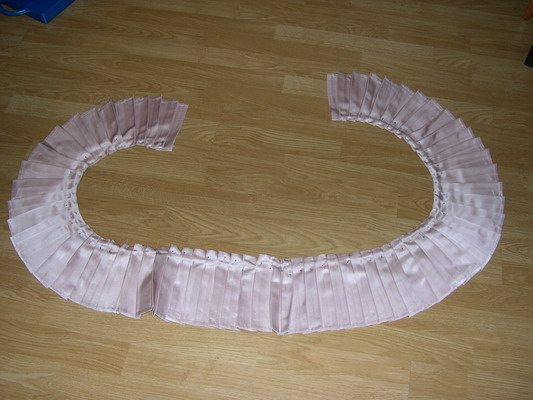 Now, the pleats. Usually when pleating something like this I just pleat it until it's the right length, but I was working with limited fabric this time, so I pleated the satin to the bottom of the skirt, then ironed the pleats into place. |
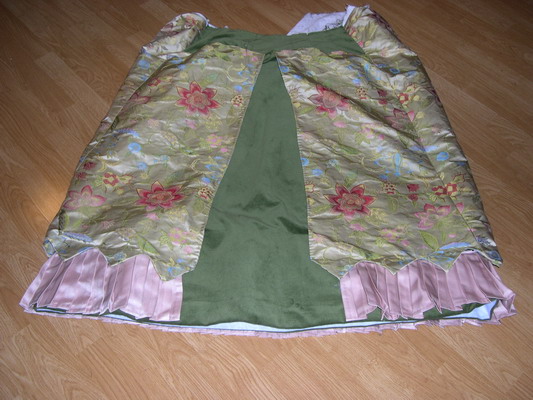 The pleats put into place on the skirt. The top edge is folded over and they're machine sewn on since it doesn't show due to the damask layer. |
  |
| More views of the layers. The skirt closes at center back with hooks at the waist. The opening does gape, but it doesn't matter because the train covers it. I considered putting hooks and eyes in, but found they weren't needed. |
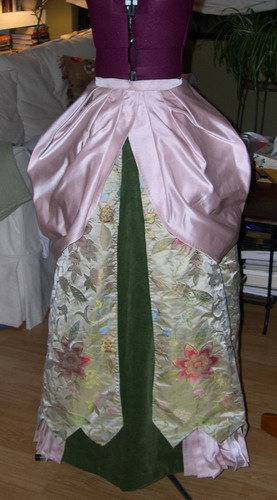 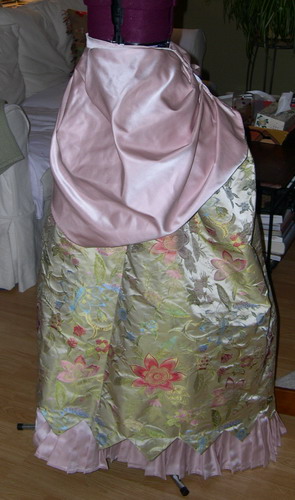  |
| To get the shape of the overskirt, I just draped fabric until I was happy with it. The pleats come up in back to the edge of the opening. |
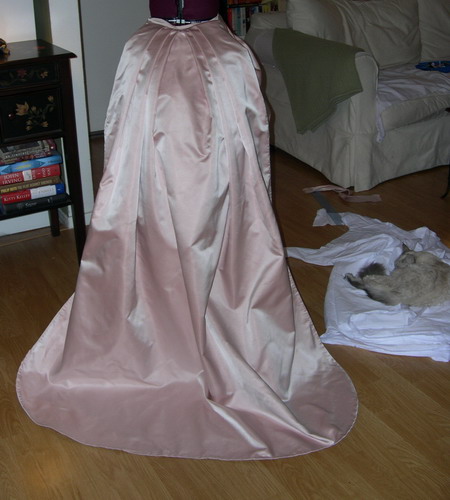 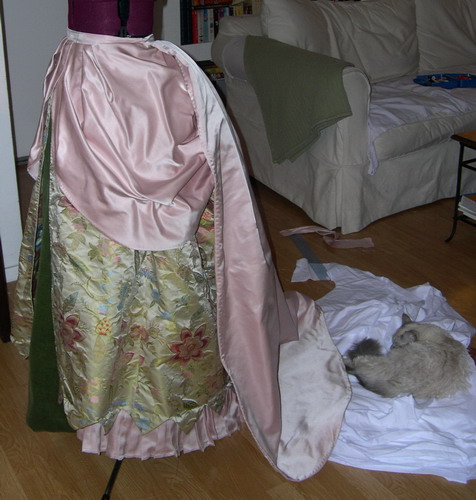 |
| The attatched train. The train is pleated to a separate waistband which is sewn to the right side of the main waistband and then closes on the right side with hooks and eyes. |
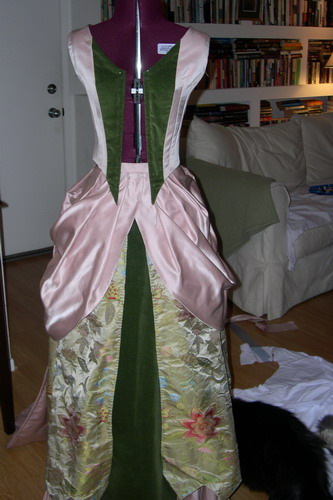 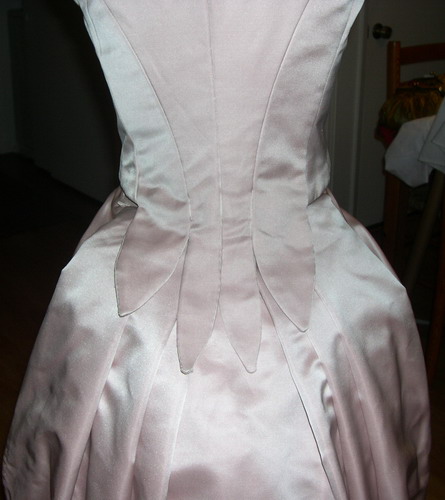 |
| The bodice with the skirt, and the petals in back. Each petal is faced with silk satin. |
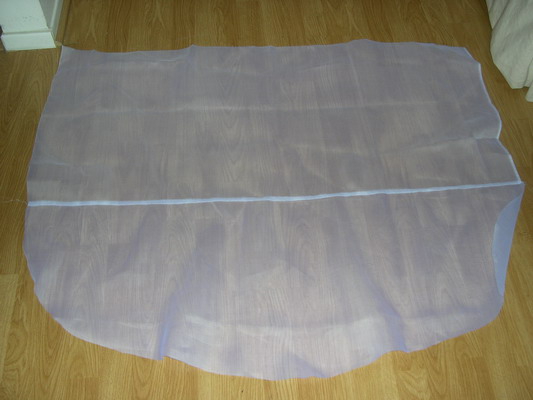 The dust ruffle is made of Swiss organdy, voile and lace. The base layer is of organdy. There's a seam in the middle because I decided after starting it that I wanted to make it cover more of the skirt. |
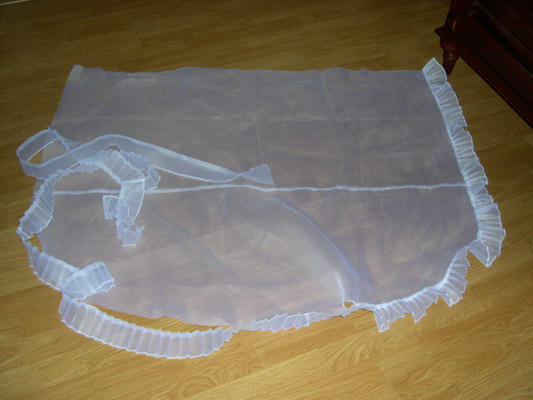 For the ruffle, I just pleated organdy until it was the right length. |
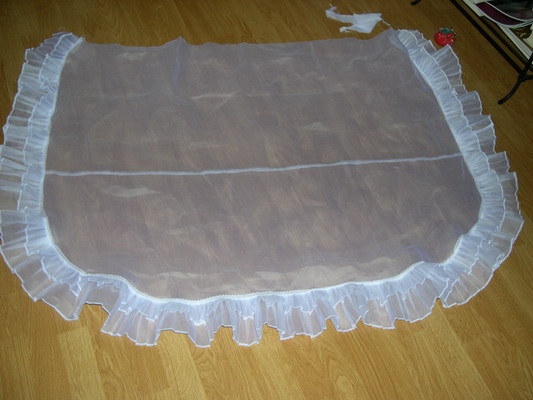 I added a second row of pleats because I made the whole thing a little too narrow. The effect of two rows of pleats made me happy I made the mistake! |
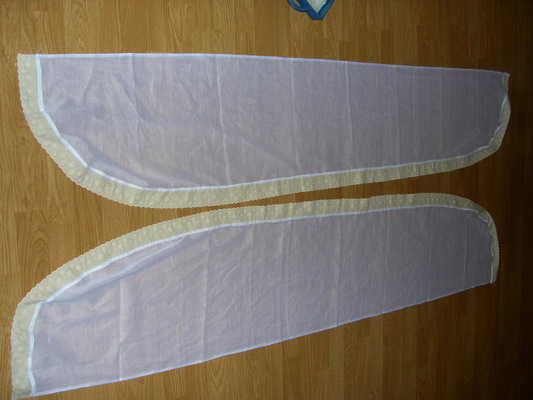 I used two slightly different sized pieces of voile to make the inside part of the ruffle. |
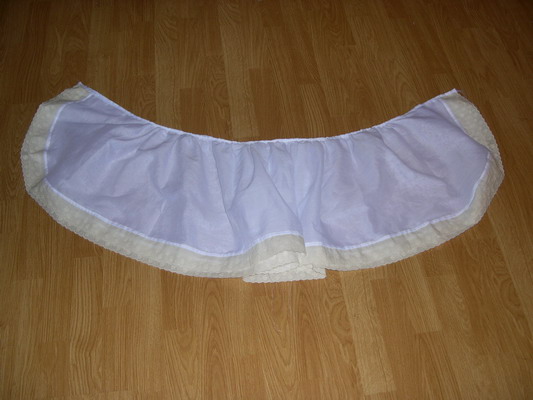 Then I gathered and bound the voile pieces. |
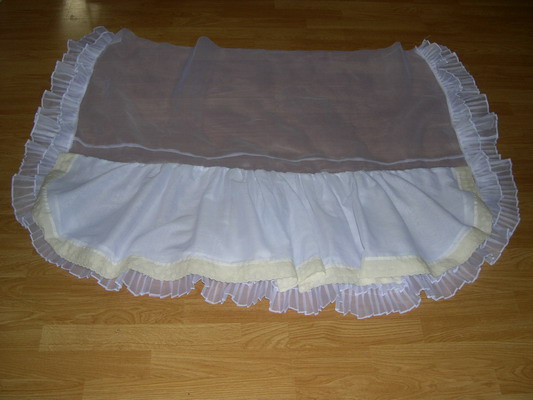 Next, they were whipstitched to the organdy. The finished dust ruffle was basted all around to the inside of the train. |
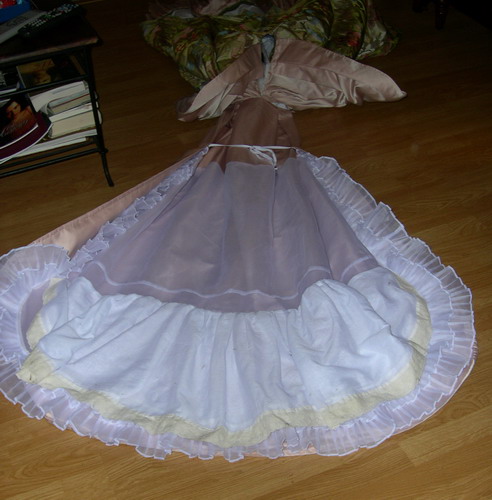  |
| The finished dust ruffle, with the layers like they sit when it's being worn, and with them pulled up to show the ribbon. The ribbon is mainly decorative, but provides a convenient place to lift the train. |
Construction
My Costumes
The Bustle Era
 I'd
like to go home!
I'd
like to go home!